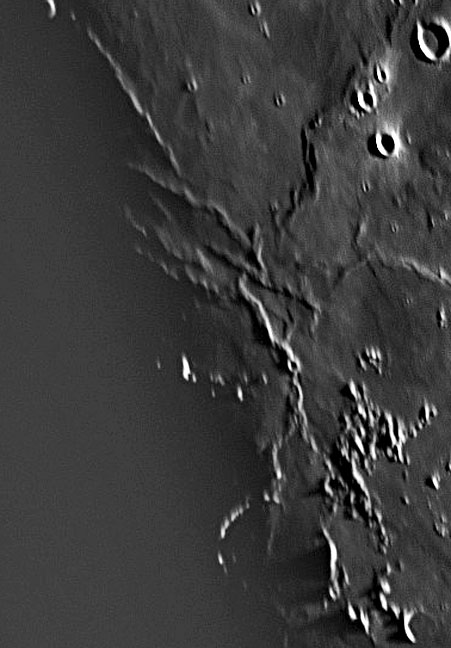
image by Peter van de Haar
Mare ridges typically form concentric to impact basin edges, often marking their buried inner rings. This image shows ridges that intersect in peculiar angles like two different sets of ridges. If you haven’t recognized the area yet, it is southern Oceanus Procellarum - the flat-floored crater at top right is Lansberg C. So what is the possible interpretation of this apparent collision zone? I speculate that the both sets of ridges that are diagonal from the upper left corner trace a diffuse inner ring of the Procellarum impact basin - I don’t know why they are at different angles. The ridge that extends from near Lansberg C is not obviously related to any structure and doesn’t look like a ghost crater arc. Who says we understand the Moon?
Technical Details:
June 6, 2006. Celestron C11 @ f10, camera DMK 31AF03. 500 of 1300 images stacked and processed with Registax.
Related Links:
Rükl chart 41
Yesterday's LPOD: Interlude
Tomorrow's LPOD: Woeful State of Lunar Image Maps
COMMENTS?
Register, Log in, and join in the comments.



